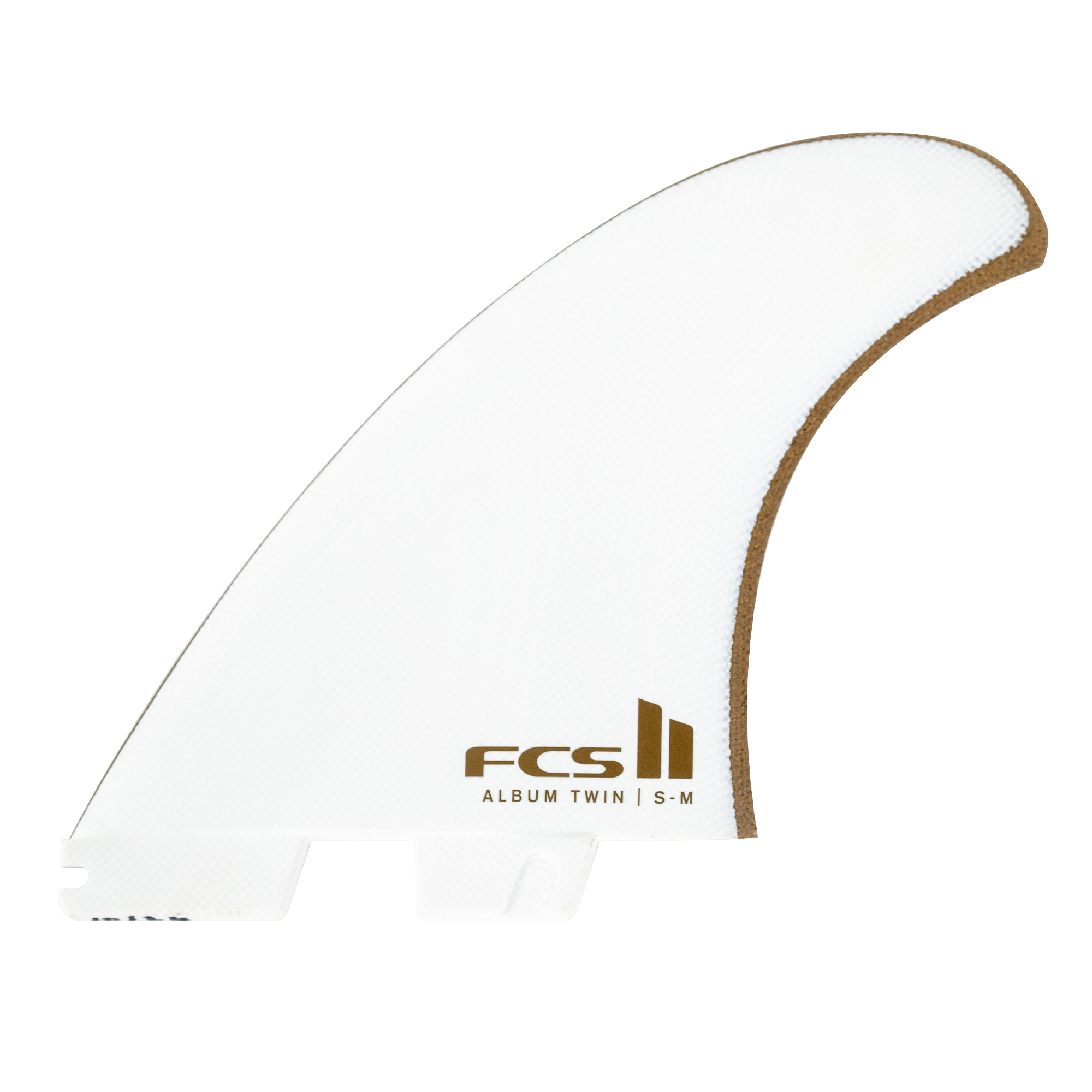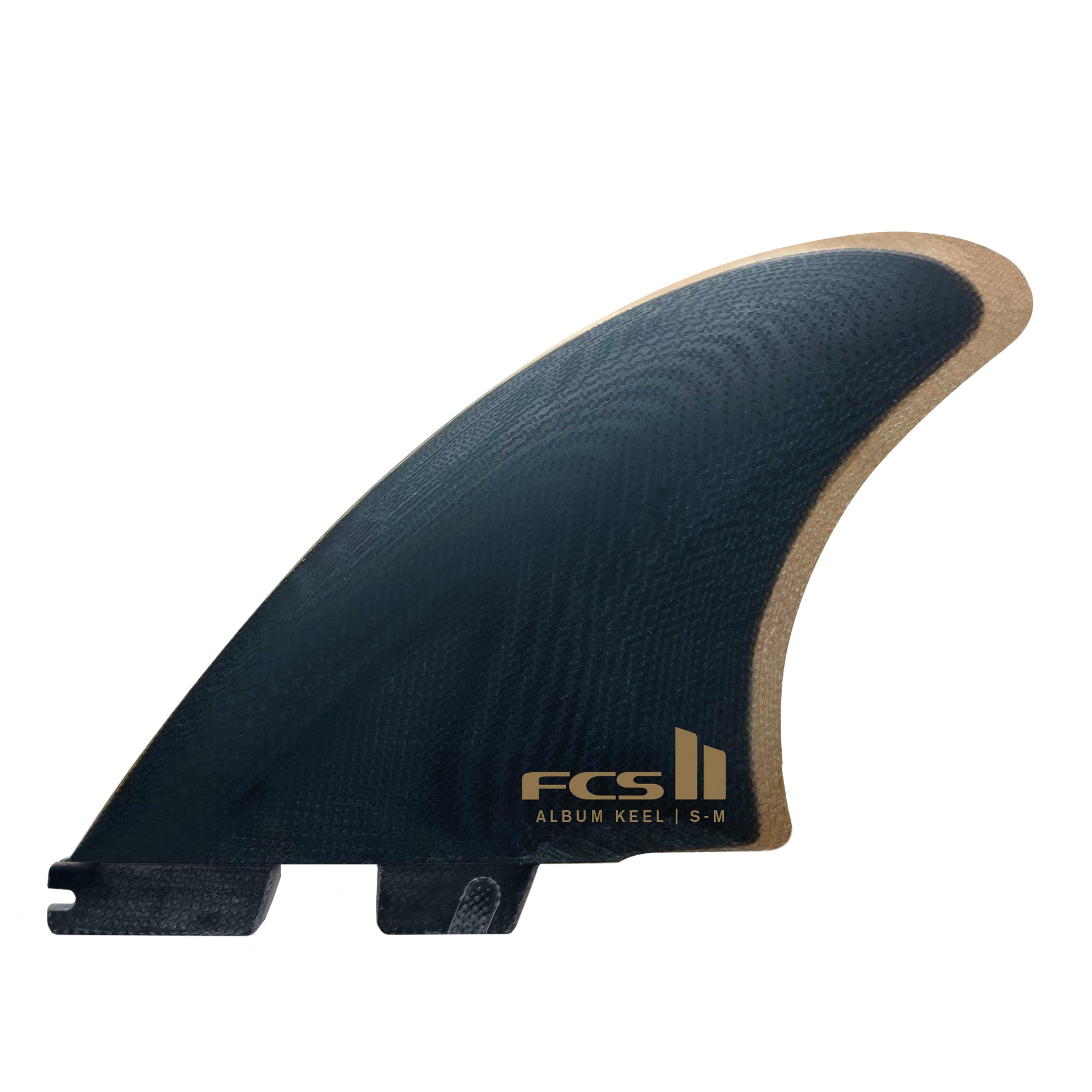Your Cart is Empty

07.11.2023
INTRODUCING THE ALBUM COLLECTION
Matt Parker of Album Surfboards designed the FCS II Album Twin +1 and Keel fins to seamlessly enhance his diverse range of twin fin models.
The Twin +1 was developed for surfers looking for a super drivey twin template with lots of hold, and can be used with or without the trailer.
The Keel is perfect for twin enthusiasts and lighter surfers who want the glide and flow of a traditional keel, with the performance and turning freedom of a more contemporary twin template.
A QUICK CHAT WITH MATT PARKER FROM ALBUM
How did you fall in love with shaping and what led you to this point?
When I was young, I was always interested in surfboards, obviously. I was fascinated by just how they were made and everything about them. I remember when I got my first board and I was so perplexed at just how it was glassed, and how the fins were glassed on back then. So I was always fascinated by it. Then as I was growing up, I always wanted to try different types of boards and when I would go into shops it was hard to find different kinds of boards. You'd go in a shop and it was like there were 100 of the same pointed nose short boards and I wanted to try something unique.
I was going to art school and so I was like, 'I should just try to hack something out myself', make something that I couldn't buy in a store. And so I just grabbed the basic tools and just hacked out an alternative surfboard, glassed it, and surfed it. And it actually kind of worked, but I saw about a million things with the board that I would want to do differently. So I totally got the bug. I sold it, got money to buy another blank, make another board, shape it, make it, sell it. It just went from there.
Where did the fixation on surfboards come from to begin with?
I think, I ended up going to school for design, as a designer. And so there must've been something in me that just was attracted to the shape and design of a surfboard. Obviously, I was fascinated with surfing and surfboards. That was my main passion. And I grew up 15 or 20 minutes inland so I didn't grow up right on the beach. So, seeing a real surfboard when I was a kid was not something I saw everywhere. So, seeing one tangibly was a little bit magical and mystical to me because I had no idea how they were made, where they came from, how they were designed... I didn't know anything about it. And so I think some of that mystery was really exciting and interesting to me.
Did you ever get any sort of pushback from parents or lecturers going, "Surfboards? Come on."
I didn't tell anybody. When I was in design school, I was just focused on just learning design, and learning the art side of things. I think I was just making boards in the secret of night back in my garage or back in my house just for myself, as a side project. I had no intention of it being a thing. It was just for fun. It was a total hobby, experimentation, creative outlet and to go, ‘no rules,’ because it didn't matter. It was just purely for me to dream up something, see if I could shape it and see if it actually worked. And if it didn't, who cared? Because no one knew I was doing it anyway.
Were you exploring different things, back then, like different shapes, or were you just shaping a lot of the kinds of boards that were around in the mid to late 90s?
It was a little bit of both. On one hand, I was trying to make something that actually looked like a surfboard. So, the rails felt like rails, the fins were in the right place and the rocker looked reasonable. The other part of it was how can I make something that's totally out there, and really push the limits? So I've been making asyms and twins and stuff like that kind of from the jump. So, for 20 years I've been doing that kind of stuff.
What sort of challenges were you facing to get them to be as high quality as possible, especially in an asym where they weren't popular like they are now?
You had to really hunt for information. And so a lot of it was kind of blindly throwing a dart at a board and seeing what it did. And part of that was learning the craft too. You kind of make something without any real expectation, just kind of a guess. And I think part of it is the surprising factor of how many things actually do work to a certain degree. Everything kind of works in some way if you can figure it out. The fun of that, would be to make something weird, and then go surf it, and try to figure out 'what does this board want to do and how do I make it work?'
I could paddle out on a traditional shortboard, and it's like I know exactly what it's going to do. I know exactly what kind of surfing it's going to lead me to do and it's kind of predictable. And so the unpredictable nature of some of the more off-the-wall stuff is just kind of exciting, because of that anticipation, that first wave, that first drop. And you're like, 'Oh, what is this? I don't even know what this is going to do. I have an idea, but who knows? It's pretty fun.
What sort of early proponents got on your boards – other than yourself – and gave you a lot of feedback that helped develop this quite alternative sort of craft?
Yeah, I mean definitely lots of local guys and Otto Flores was a well-established pro surfer who lived in Puerto Rico. He was definitely keen on surfing the boards and kind of validating them in good waves. Josh Kerr has been the best validator for the twin fins and good surf over the last eight or ten years or whatever of him riding the boards and seeing them actually work. Not that they just look prettier, they look unique, but they actually do make you surf better. I think he surfs better and he has more fun on them.
Was that always a drive - to blend performance with fun?
Yeah. For sure. I think too many people in the general public try to surf boards that are made for pros and they miss out on a lot of fun they could be having. Or they miss out on a lot of days that would maybe be surfable, but they're on the wrong equipment, so they're not having the fun that they could have. Obviously, the point of all of it is to have fun and have new feelings and new experiences out in the water and if everyone's going down one path of how to make a board or how to surf, that leaves a wide-open world for people to make something a little bit different.
As the years go on and people are playing with different fin set-ups, do you think there’s more variety in today’s twin fins?
Yeah, I mean, if you look at surf history like when Mark Richards was winning world titles on twin fins, it was just three to five years where twins really had their little day in the sun. So they never reached their full potential as far as what was possible with them. There just wasn't enough time and experimentation and the thruster came in '81 or whatever and it changed the course of professional surfing and the twin fin progression was kind of stilted. In the last 30 or 40 years we’ve seen a lot of progression in modern bottom contours, modern rails, better foiling on fins, better templates, better material construction and all that kind of stuff. So you apply this pure friction-free feeling of a twin fin and all the speed that it gives you, plus lots of manoeuvrability and you add in all the modern enhancements that we've gotten in the last 30 or 40 years with performance shortboards and you apply it to twin fins. The sky is the limit for what's possible on those kinds of boards. And just look at Kerrzy going backside at six-to-eight-foot Chopes riding a twin fin without any trouble and actually performing really well.
When everyone first saw what Kerrzy was doing on twins - not only at Chopes, but also when he went to the Ments a couple of years ago - it just blew everyone's mind about how hard he was actually pushing those things. At that time, did you realize what they were quite capable of or were you just as surprised as everyone?
I think I realised when he jumped on the twinnies and within a couple of weeks he really had no desire to ride anything else. He could ride anything he wants to ride and this is what he wants to ride because it's meeting his performance level or actually advancing his performance level and he is having the most fun and it's not holding him back in any way. So we put out that Sway edit a couple of years ago and it's pretty much just him pushing twin fins in proper well-overhead waves and proper tubes. I've always been a backer of the concept, so I wasn't necessarily surprised, but it was more gratifying to have that validated in my own brain, know that we're onto something and that it's legit and it works.
FCS II ALBUM TWIN +1
The FCS II Album Twin +1 is super drivey and stable. The wide base, together with a robust tip that features a subtle point positioned at the top of the trailing edge, provides a burst of forward acceleration straight from the take-off.
It has a neutral sweep but sits quite deep in the water, offering a very stable feel when driving down the line and performing turns. This also adds an element of control and confidence for surfers wanting to push this set in steeper sections. The stabiliser fin mimics the outline of the side fin template and can be added to further enhance the predictability of this set.
FCS II ALBUM KEEL
The FCS II Album Keel narrows the gap between a traditional keel template and a more contemporary twin template. The appearance is indicative of a regular performance fin with added width at the base and through the middle, and significantly more curve on the trailing edge compared to older style keels.
Positioned in the S-M size category, this is a keel designed for high performance surfing with an emphasis on speed and performing smooth, yet radical turns on modern style keel twin models.

















